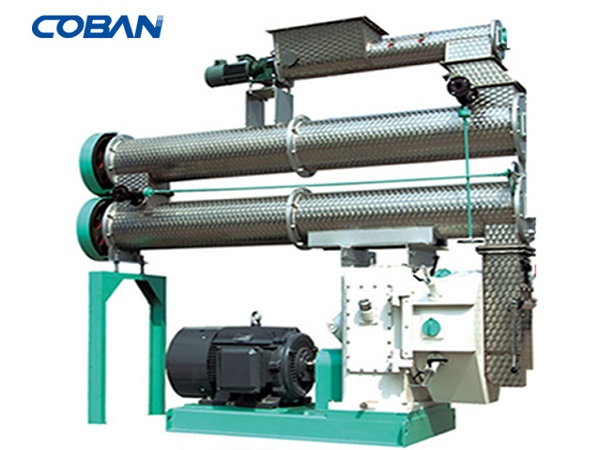What is the working principle of the ring die pellet machine
The ring die pellet machine shapes raw materials into pellets for feed and biomass energy, featuring a feeding system, conditioning, pelletizing, and control system. It operates through automated processes of material conveying, conditioning treatment, and extrusion molding, offering advantages in raw material utilization, palatability improvement, and shelf life extension.
The ring die pellet machine is a mechanical device that shapes powdery or crumbly raw materials into pellets through pressing, widely used in feed processing, biomass energy production, and other fields. This article will provide a detailed analysis of the working principle of the pellet machine and its application in the production process.
Basic Structure
The pellet machine mainly consists of a feeding system, conditioning system, pelletizing system, cooling system, and control system.
Feeding System
Responsible for evenly conveying raw materials into the machine, typically including hoppers and conveyor belts.


Conditioning System
Heated and moistened raw materials with steam or hot water to enhance their plasticity for subsequent pressing and shaping.
Pelletizing System
Includes the ring die and press roller, the core part of the pellet machine, responsible for pressing conditioned raw materials into pellets.
Working Process
The working process of the ring die pellet machine is automated and continuous, involving multiple coordinated steps.
Feeding
Raw materials enter the conditioning system through the feeding system.
Conditioning
The conditioning system heats and moistens the raw materials, adjusting their moisture and temperature to meet pelletizing requirements.
Pelletizing
Conditioned raw materials are sent to the pelletizing system, where they are pressed into pellets through the squeezing action of the ring die and press roller.
Key Components
The key components of the ring die pellet machine include the ring die, press roller, feeder, and cutter.
Ring Die
The ring die is the most important part of the pelletizing process, with its hole shapes and sizes determining the shape and diameter of the pellets.
Press Roller
The press roller works closely with the ring die, applying pressure to squeeze raw materials into pellets.
Feeder
The feeder is responsible for evenly conveying raw materials into the conditioning system, ensuring the continuity and uniformity of the pelletizing process.
Cutter
The cutter is used to cut the extruded strip-shaped pellets into the desired length.
Detailed Explanation of Working Principle
The working principle of the ring die pellet machine is based on the physical extrusion and molding process.
Material Conveying
Raw materials are conveyed into the machine through the feeding system, ensuring a continuous and uniform flow of materials.
Conditioning Treatment
The conditioning system heats and moistens raw materials with steam or hot water, adjusting their moisture content and temperature to meet pelletizing requirements.
Extrusion Molding
In the pelletizing system, the press roller applies pressure to the raw materials, pushing them through the holes in the ring die to form pellets of the desired shape.


Advantages
The ring die pellet machine has several advantages in feed processing, including improving raw material utilization, enhancing animal palatability, and extending the shelf life of feed.
Raw Material Utilization
The pellet machine improves the comprehensive utilization rate of raw materials by mixing various raw materials into pellets.
Palatability Improvement
The consistency and palatability of pellet feed help increase the amount and efficiency of feed intake by animals.
Shelf Life Extension
Pelletized feed is less susceptible to moisture and mold during storage and transportation, extending the shelf life of feed.
- What should you pay attention to when purchasing feed production equipment?
- What are the advantages of large feed processing equipment?
- What are the advantages of pellet feed production line equipment?
- The impact of the particle size of the feed crusher on its quality
- Analysis of factors affecting work efficiency of feed production line
- Price and Safety of Pellet Feed Production Line
- Feed production line equipment prices and key factors in development
- The core role of feed production line and market price analysis
- Cattle feed production line procurement in Philippines
- Cattle Feed Production Line Manufacturer in Philippines







